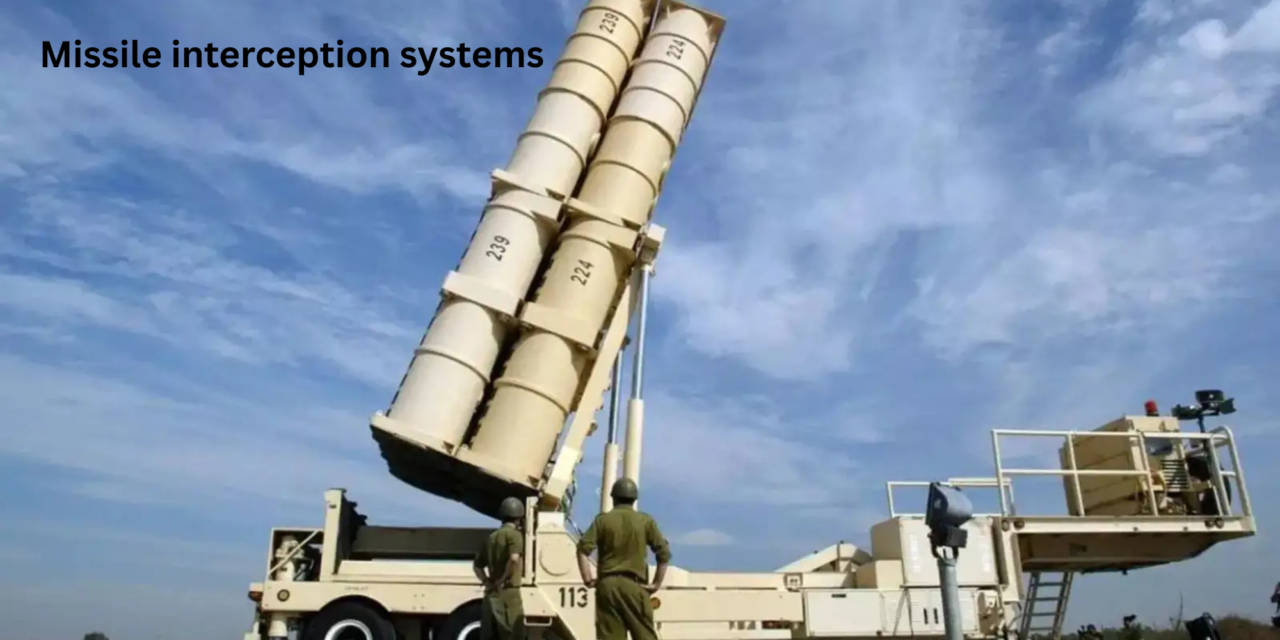Missile interception systems have undergone significant technological advancements to counter increasingly sophisticated missile threats, such as hypersonic missiles, maneuverable warheads, and saturation attacks. These advancements enhance detection, tracking, targeting, and interception capabilities, improving the effectiveness and reliability of missile defense systems. Here are the major technological developments in this field:
1. Advanced Radar and Sensor Systems
A. Phased-Array Radars
- Features:
- Electronically steered beams for rapid, multi-target tracking without mechanical movement.
- Example:
- AN/TPY-2 Radar used in the THAAD system.
- Advancement:
- Improves tracking precision for high-speed, low-RCS (Radar Cross Section) threats.
B. Over-the-Horizon (OTH) Radars
- Features:
- Detect threats beyond the radar horizon by bouncing signals off the ionosphere.
- Example:
- Russia’s Container radar for long-range early warning.
- Advancement:
- Expands the detection range, allowing earlier interception planning.
C. Space-Based Infrared Systems (SBIRS)
- Features:
- Detect missile launches through infrared sensors that identify heat signatures.
- Example:
- U.S. SBIRS satellites.
- Advancement:
- Provides global coverage and faster detection of missile launches.
2. Hit-to-Kill Technology
- Mechanism:
- Intercepts and destroys missiles by direct impact rather than an explosive warhead, relying on kinetic energy.
- Example:
- THAAD interceptors and Patriot PAC-3 missiles.
- Advancement:
- Reduces risk of collateral damage from detonated warheads, including chemical or biological threats.
3. Directed Energy Weapons (DEWs)
- Mechanism:
- Use lasers, high-power microwaves, or particle beams to disable or destroy missiles.
- Applications:
- Intercept missiles during their boost phase or disable their guidance systems.
- Example:
- U.S. HELWS (High-Energy Laser Weapon Systems) and experimental airborne laser systems.
- Advancement:
- Infinite “ammunition” as long as power is available, making them cost-effective for repeated engagements.
4. Hypersonic Interceptor Technology
A. Glide Phase Interceptors (GPIs)
- Purpose:
- Intercept hypersonic glide vehicles (HGVs) during their midcourse or glide phase.
- Example:
- U.S. Glide Phase Interceptor (GPI) under development.
- Advancement:
- Designed to counter the extreme speed and maneuverability of hypersonic threats.
B. Multi-Target Interceptors
- Purpose:
- Engage multiple targets simultaneously, such as HGVs and their decoys.
- Example:
- Russia’s S-500 Prometey.
- Advancement:
- Expands engagement capacity, especially against complex missile attacks.
5. Artificial Intelligence (AI) and Machine Learning
- Applications:
- Enhance threat detection, trajectory prediction, and target discrimination.
- Features:
- AI systems process vast amounts of sensor data in real time, identifying patterns and anomalies.
- Advancement:
- Reduces decision-making time and improves response accuracy for highly dynamic threats.
6. Multi-Layered Defense Systems
- Concept:
- Integrates multiple layers of missile defense systems to intercept threats at different phases of their trajectory.
- Example:
- The U.S. layered defense includes THAAD (terminal phase), Aegis BMD (midcourse), and Patriot PAC-3 (terminal and lower tier).
- Advancement:
- Provides redundancy and ensures a higher probability of successful interception.
7. Proliferated Low Earth Orbit (LEO) Satellites
- Purpose:
- Enhance global tracking and communication for missile defense systems.
- Example:
- U.S. Hypersonic and Ballistic Tracking Space Sensor (HBTSS).
- Advancement:
- Offers persistent monitoring and improves tracking of hypersonic threats.
8. Counter-Saturation Capabilities
- Purpose:
- Handle saturation attacks involving multiple simultaneous missile launches.
- Features:
- Faster reloadable interceptors, multi-target tracking, and decentralized command networks.
- Example:
- Iron Dome (Israel) and Russia’s S-400 system.
- Advancement:
- Uses AI to prioritize threats and allocate resources effectively.
9. Advanced Interceptor Missiles
A. Dual-Pulse Rocket Motors
- Purpose:
- Provide enhanced maneuverability and extended range for interceptors.
- Example:
- Patriot PAC-3 MSE (Missile Segment Enhancement).
- Advancement:
- Allows interceptors to adjust their trajectory mid-flight for more precise targeting.
B. Multiple Kill Vehicles (MKVs)
- Purpose:
- Deploy multiple kill vehicles from a single interceptor to engage multiple warheads or decoys.
- Example:
- MKV programs under development in the U.S.
- Advancement:
- Increases efficiency against complex and decoy-laden missile attacks.
10. Integration of Cyber Defense
- Purpose:
- Protect missile defense systems from cyberattacks that could disrupt operations or compromise sensitive data.
- Features:
- Encrypted communication, firewalls, and real-time threat detection systems.
- Advancement:
- Ensures system integrity and reliability during critical defense operations.
11. Quantum Technologies
- Applications:
- Quantum radar for detecting low-observable threats like stealth missiles.
- Quantum communication for secure data transfer between defense nodes.
- Advancement:
- Offers breakthroughs in counter-stealth capabilities and resilient communication networks.
Advancements in missile interception systems have significantly enhanced their effectiveness against evolving threats, including hypersonic missiles, stealth technologies, and saturation attacks. Emerging technologies like AI, directed energy weapons, multi-layered defense systems, and space-based sensors are revolutionizing missile defense, ensuring robust and adaptive protection against a rapidly changing threat landscape. Continuous innovation and global collaboration will be key to addressing future challenges in missile interception.













